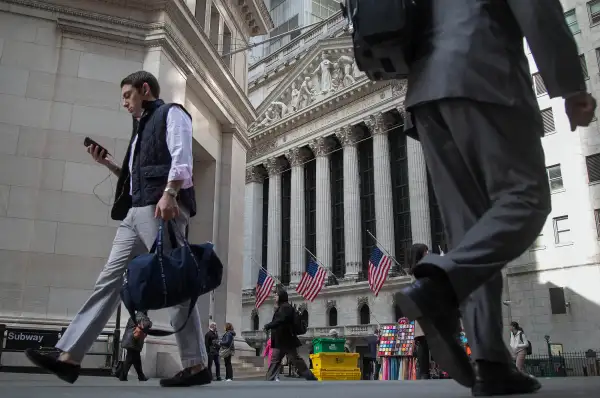Why the Disappointing May Jobs Report Is So Important
Money is not a client of any investment adviser featured on this page. The information provided on this page is for educational purposes only and is not intended as investment advice. Money does not offer advisory services.

The case for the Federal Reserve raising interest rates just got a lot harder.
For a second consecutive month employers added a disappointing number of new workers to their payrolls, the government reported on Friday. Now the Fed has to determine whether the economy is still strong enough to endure the first rate increase in six months when the central bank convenes in about two weeks.
The Labor Department announced that the economy produced a lower-than-expected 38,000 new jobs in May, due in part to a Verizon strike, while the nation’s unemployment rate fell to 4.7%. The government also went back and revised lower the number of jobs it believes were created in April and March by 59,000. Employers have now added just 116,000 new positions on average for the past three months.
"We haven’t had that big of a nonfarm payrolls miss in a very, very long time," said Guy LeBas, chief fixed income strategist for Janney Montgomery Scott, adding that "a big miss on May payrolls results makes it all but impossible for the Fed to raise interest rates in June."
Today's report follows a slew of mixed economic news that makes determining the strength of the U.S. economy difficult.
Take economic growth. Last week the Commerce Department announced the gross domestic product grew more than previously expected, rising at an annual rate of 0.8% compared to 0.5%. That still represents a slowdown in economic activity from the end of last year. The price of oil has risen above recent lows to nearly $50 a barrel, a level that makes investment more profitable for extractors.
According to minutes from their most recent meeting in April, the Fed led market participants to believe it viewed the economy being nearly strong enough to handle a raise in short-term interest rates. "The information reviewed for the April 26–27 FOMC meeting indicated that labor market conditions improved further in the first quarter even though growth in real gross domestic product (GDP) appeared to have slowed," according to the minutes.
- Calculator: What is my risk tolerance?
The Fed's Beige Book, a separate report that takes into account the temperature of business owners across the country, also appeared to make the case for an interest rate hike.
One key metric was inflation, especially since wage and price growth has been so muted despite a relatively low unemployment rate. "Information received from the 12 Federal Reserve Districts mostly described modest economic growth since the last Beige Book report," the Fed said. "Employment grew modestly since the last report, but tight labor markets were widely noted; wages grew modestly, and price pressure grew slightly in most Districts."
Inflation now rests at 1.6%, according to the Fed's preferred metric, below the central bank's 2% target.
Complicating matters is an ever changing global economic landscape. Even if the U.S. economy is ready for another rate hike, would policymakers risk hiking rates right before British voters take to the polls to decide whether to stay in the European Union. A break from the pact could have far-range implications for the world.
Which is why today's report is so important. The Fed now has cover to delay an interest rate increase until later in the year. The markets now wait for June 15th with bated breath.
